Iowa Soil Test Results Help - Year 2
Wors
6 years ago
Featured Answer
Comments (14)
Wors
6 years agoRelated Discussions
Soil Test Results Help
Comments (21)I have found an opportunity here to learn about soil chemistry and plants requirements. The concept of "buffer" as mentioned by idaho-gardner is very interesting as applied to soil chemistry. I got into serious gardening within past three seasons. Started from GA red clay, with lots of redish rocks, stones. I got into internet and learned about ways to amend that red clay. I did all that very hard work, without buying any topsoil or compost from anywhere. I was told that I have to pay attention to soil PH.(potential Hydrogen), which I was familiar with from college chemistry. Then I checked the soil; PH was around 5.4. I was told (internet , info from PH meter manufacturers) That it was too low unless I wanted to grow just potatoes. WHAT TO DO?? "lime"! so I kept adding lime , but then I was told that it will take a year or so for that to work and bring that PH up. I also kep pouring lots of wood ash from my fireplace.... but despit all that low PH I managed to grow decent tomatoes, onions, squash, cucumbers, and all kinds of herbs. Now, the soil PH in my garden is probably around 6.2. I did fine with PH=5.4 so I sould not worry about it. Some fellow gardener here in GW warned me "be careful, not to add too much wood ash it can raise the PH..". I was just getting scared right there (LOL). But right now, WHO CARESS about PH! forget all about it and unlearn what you have learned. I am so relaxed now, not worrying abou this and that thechnical and scientific jargons. The nature is smarter than all of us. Cyrus...See MoreHelp with Soil Test Results
Comments (12)haliwa01 , What you are saying makes perfect since too me, and will you too if you think about it for a minute. In regards to lime tells me your soil is naturally acidic by nature. I believe that is quite common for NC soils. So what that means is it will be a continuous battle for you with annual or bi-annual applications of lime just to keep at the bottom end of the optimum PH range. If you slip or miss applications your soil will turn sour quickly. It just means you have to apply lime at least every year to stay a float. Starter fertilizer contains a large dose of Phosphorous which explains your recent jump in the soil test. There is not any thing wrong with your P levels as they are just slightly above optimum levels, you just have enough for now to last a while. IMHO all you have to do in the future is lime once or twice a year and stay organic. By staying organic your NPK ratios should stay in optimum ranges. If your yearly soil test indicates otherwise; then deal with it on a post-reactive measure rather than pre-active....See MoreIowa Soil Test Help
Comments (6)You can irrigate or not irrigate as it pleases you, although for this year I'd irrigate at least the lawn if possible. Your grass is young. After that, however you play it is up to you! This year, I'm not irrigating (except the gardens, of course). Overall, the test isn't bad. For the most part, I rolled the lawn and outlot together as they're very similar results. Where they differ in an important way, I was careful to note that. In the future, you can combine these tests. ME 20-something: Normally, this would speak to a heavier soil, but in your case the excessive calcium is pushing this answer up. I'm going to call your soil around an ME of 15, or what would usually be a pretty good loam. pH 7.1: A little high, but nothing that'll cause any problems. It will tend to limit iron uptake, so use of Milorganite is a good idea. Other than that, your grasses (and most plants) won't have too much trouble with this, although I'd avoid acid-loving plants in the gardens. Organic Matter 3, 4.5: Fair and Good, respectively, both of which are great given your ME. Certainly mulch mow, mow all your fall leaves, and feed organically if you wish, but you don't need to make any special effort. Sulfur 20, 9: Both are perfectly acceptable answers. The 9 might be a little low, but although sulfur is required, it's not required in huge amounts at any one time. That won't cause deficiency. Phosphorus 58, 81: Very close answers (for all they look different) and both rather low for this particular test. At a pH of 7.1, my target would be about 220. We use standard starter fertilizer to fix this, and just get the cheapest. They're all about the same. Recommendations below. Calcium 82%-ish: Very high, but not a problem. Calcium's not toxic under normal circumstances and lawns can grow in limestone chips. It's setting off your higher pH in part, but there's nothing we can really do about it anyway. Avoid major calcium sources. Magnesium 12%-ish: It looks textbook perfect, but it's actually rather high--it's just somewhat suppressed by the high Ca. Avoid magnesium sources. Potassium 0.8%-ish: It looks very low, but it isn't as low as it looks (the calcium and magnesium are both depressing this answer). Still, it is lower than I would like to see, optimally speaking. While technically optional, I'd do the following. We use potassium sulfate (sulfate of potash) to correct this, which you can sometimes get at garden or landscape stores, or have them order it for you. Or you can get it online. Recommendations below. Minor Elements: Boron is off in the Lawn area, and discussed below. Iron is also mentioned. Iron 100-ish: Absolutely not a problem, but not going to produce good color at your pH. Whenever you wish, apply Milorganite at the bag rate to very slowly raise this. Boron 0.32, 0.74: Optimal on the Outlot portion, low on the lawn. While not the most important element, I'll always work to move your lawn into the most optimal range on everything. Me? I'd fix this. We use Milorganite as a carrier and 20 Mule Team Borax as the boron source. You can purchase 20 Mules at the grocery store in the laundry section. In a wheelbarrow or the like, dump the Milo. Spraying very, very lightly with water (I use a spray bottle like the kind people use to damp their clothes when they iron) will help the boron stick. Add the recommended amount of 20 Mule Team Borax and stir, spraying occasionally to get the stuff to stick to the Milo. Then apply over the recommended area. So if going for bag rate Milorganite (1 bag per 2,500 square feet), you'd add 10 tablespoons of 20 Mule Team Borax. Recommendations: August 15: (optional but recommended) Apply 4 tablespoons of 20 Mule Team Borax per thousand square feet in Milorganite carrier. September 1: Apply starter fertilizer at the bag rate. September 15: (optional but recommended) Apply 3 pounds per thousand square feet of potassium sulfate. October 1: Apply starter fertilizer at the bag rate. October 15: (optional but recommended) Apply 3 pounds per thousand square feet of potassium sulfate. May 30, 2017: Apply starter fertilizer at the bag rate....See More2017 Logan Labs Test Help (year 2 of soil management)
Comments (25)An excellent analysis and I'm very impressed. As an engineer, I live in the world of assumptions. As long as they’re understood, all is well. However here, I’m making a LOT of assumptions that I don’t understand very well at all, so I’m not too comfortable with my conclusions. That is compounded by the inability to really check the change from last year because of my lack of consistency (I know, I know). After going through the numbers in detail, I now see just how helpful a truly consistent measurement would have been. I'd say that's a pretty accurate description for soil analysis: a bunch of assumptions. This isn't a controlled lab situation and each year's soil sampling and test results can/will very sometimes significantly, so any variable we can control when sampling helps reduce those fluctuations. To try to stay grounded in expertise, I’ve generally just taken morpheuspa’s plan from 2016 and based on RidgeRunner’s ranges and comments, tried to convince myself of whether I could justify using the same 2016 recommendations. So, my thoughts: Why not? It's as good a place to start as any and better than starting from scratch. Assuming M III Phosphorus is what I’m adding with starter fert, bag rate of scotts starter fert (24-25-4) is 0.75 lb/k Phosphorous, or 32.67 lb/ac. I added that 4 times in 2016 for a total of 131 lb/ac of P. Not all of that hung around apparently, and since the B1 section increased by 47lb/ac and the F1 section only increased by 14lb/ac, it appears that the F1 section uses/loses P faster than the B1 section. A couple of clarifications: 1) M III (M3) is the test that was used. It is a cocktail of chemicals that is used to extract nutrients for measurement. In this case the Phosphorous is reported as lbs per acre of P2O5. (Other labs may report it as ppm of elemental Phosphorous). The nice thing about reporting it as P2O5, is that P2O5 is the form of Phosphorous contained in fertilizers. So your assumption is right. 2) Phosphorous moves very slowly (down or otherwise) through the soil and phosphorous binds within days of application and can become unavailable to the plant. In acidic soils it binds to Aluminum and Iron. In high pH soils, it binds with calcium. An assumption: the difference between F1 and B1 may be due in part to the difference in pH between your two soils as reflected in the initial test. If the target is 200, seems like another season of about 4 starter fert applications would make sense, although in the B1 section it seems like I’m cutting it close. Maybe I’ll apply a couple of the apps in that section at 0.5 bag rate? I concur. As an alternative (based on your budget) Milorganite has reconfigured their formula to 5-4-0 from 5-2-0. Now only 10-20% might be organic P, but organic P is "slow" release and would help supply P to your turf better over time. (All of P2O5 is inorganic and although inorganic P is readily available to the turf plant, it also readily binds up. I gave you the 200 range, because you had mentioned that you didn't know what target you had been given last year, 200 is his/a common target for a high maintenance lawn. Some general points of clarification: 1) for every pound of N that a plant uses (not every pound of N that is applied--but USED) the plant needs and uses 1/2 pound of Potassium and 1/4 pound of of Phosphorous. whichever is missing, is the limiting factor. 2)The ranges I gave you are the ones that soil scientist have found within which plants "appear" to do well. They are quantities averaged for soil types and plants. Research has shown that values below the range result in poor performance. That as you approach the low end, additions of that nutrient are more likely to show a visible improvement in the plant and as you approach the high end, additions of the nutrient are much less likely to result in any improvement. Values above the high end are very unlikely to show any improvement and at some point can be detrimental to the plant. (did I say this before?) Bottom line, as you progress with balancing your soil, if you reach a point within the range where you no longer see improvement, you've reached your optimum in regard to any nutrient. My Ca/Mg ratios are roughly in range (F1/B1 5.1/13.1) and slightly up from 2016 (4.7/10.6), so that’s fine, but the Calcium saturation is fairly far off. I’m assuming that this is what is causing my low pH values, but not sure how that’s calculated. Also not sure how to calculate what my expected increase in Mg saturation should be based on the fast acting lime. But since my calcium is clearly low, at a minimum I can add the same calcium (lime) app I did last year (F1: 3lb/k, B1: 1lb/k, spring and fall). The question would be can I increase that app, particularly in the B1 section, and what should the corresponding Mg app be? Since the Ca/Mg ratio is on the low side in F1 maybe I should add less Epsom Salt than I did last year? Say, 1lb/k instead of 2lb/k? Add the same or more in the B1 section to keep that ratio from becoming too large. Say, 2lb/k again. This is when a buffer pH test would help- a lot IMO. If they still have your sample (30 days?) they could run that for about $10 per sample. You are correct that base saturation reflects low pH readings and if you fill up all but 10 to 15% of the cation sites with Ca, Mg. and Potassium and leave the 10-15% to Hydrogen, you should end up with a pH in the 6's. But none of those nutrients neutralize the acidity. For soils, an addition of carbonate will do that. It's better to know how much carbonate/lime (an amount derived from buffer pH testing) is needed to raise pH than to estimate based on total base saturations. BSCR, CEC, lime and differences in lime products, etc. is a bit involved, but I'm happy to clarify any questions you have on them. As it stands now, without a buffer test, as your pH is not really moving and/or dropping and as you want to avoid freeing up any more Aluminum (which can be toxic to the turf in addition to the P issue), you want to raise your pH using lime additions. Your Mg is near sufficient levels, so it shouldn't be an impediment to your turf, however, if you wish to address the base saturation ratio, yes, 1#/k for B1 only of Epsom (considering the difference in sampling and to avoid over shooting) and mixed with the lime. Yes, I'd increase the lime app. As both areas are near the same pH, fast acting lime at 9lbs/k (B1 and F1) would be indicated and even that may not make for much movement in pH on a future test. It should help the available P values to raise. Potassium values seem to be low, and the saturation fell significantly, which, based on morpheuspa’s statements, probably has to do with the Calcium. Common lawn wisdom makes me think I should add in a potassium-rich “winterizer” app in the fall to bump that number. But it again seems like I need to add at least what I added of Potassium Sulfate in 2016 (F1: 3lb/k). However, this time it looks as though adding 3lb/k to the B1 section also might be a good idea. Agree, in fact, I'd suggest increasing to three apps of 3#/k this year. Avoid applying within 2-3 weeks of any lime app. I’ve been sufficiently warned about playing with boron in my lawn to try to improve the number without very specific advice, so I’ll probably just leave that alone this round. That's up to you, based on the soil tests and your previous app,, you could apply 2 tablespoons of Borax per k again to raise values into the optimal range. Your decision. I would have done the jar test, but I came home to a light dusting of snow. Winter isn’t done with us yet, even in S. Carolina. Hope that makes sense. Feel free to ask for any clarifications. Once again, nice job....See Morebeckyinrichmond
6 years agodchall_san_antonio
6 years agobeckyinrichmond
6 years agoWors
6 years agobeckyinrichmond
6 years agoWors
6 years agobeckyinrichmond
6 years agobeckyinrichmond
6 years agodanielj_2009
6 years agoWors
6 years agobeckyinrichmond
6 years ago
Related Stories
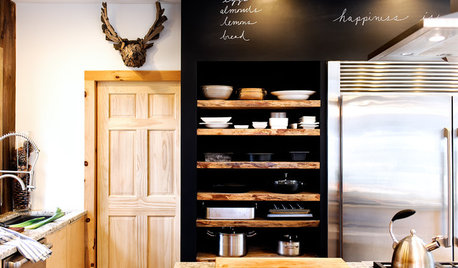
DECLUTTERINGNew Year’s Resolutions for Minimalists
Pledge to do these 12 things in 2018 and you may find you’re more satisfied with less
Full Story
HOUZZ CALLTell Us Your New Year’s Resolutions for Your Home
Share your plans and dreams for your house this year — whether they involve organizing, remodeling or redecorating
Full Story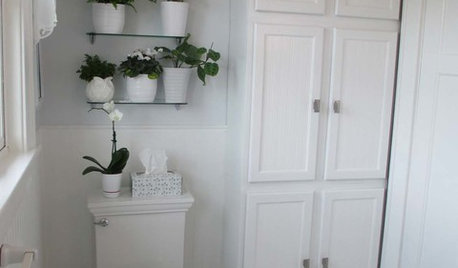
BATHROOM MAKEOVERSReader Bathroom: A New Shower and a Spa Look for $6,100 in Iowa
Over the course of 8 years and 2 renovations, a couple turn their dated bathroom into a relaxing and uplifting space
Full Story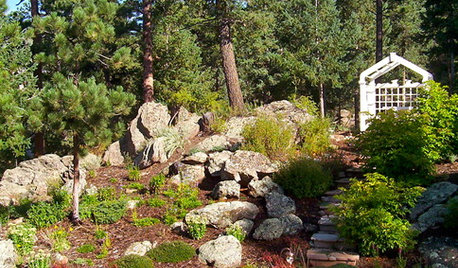
GARDENING GUIDESHave Acidic Soil in Your Yard? Learn to Love Gardening Anyway
Look to acid-loving plants, like conifers and rhododendrons, to help your low-pH garden thrive
Full Story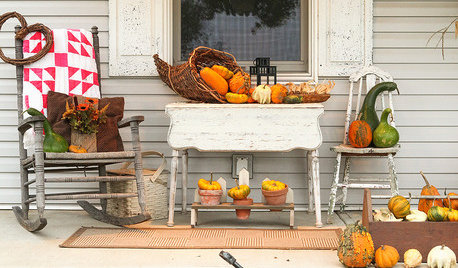
PORCHESA Peek at 2 Prettily Dressed Fall Porches
Pumpkins, fall flowers and flea market finds help two Ohio porches get into the seasonal spirit
Full Story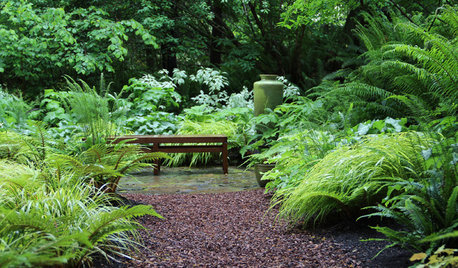
GARDENING GUIDES10 Solutions for Soggy Soil
If a too-wet garden is raining on your parade, try these water-loving plants and other ideas for handling all of that H2O
Full Story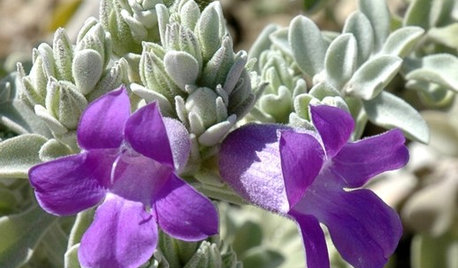
GARDENING GUIDESGreat Design Plant: Try Blue Bells for Blooms in Dry Soil
This shrub’s violet-blue flowers and silvery foliage brighten low-water gardens all year long
Full Story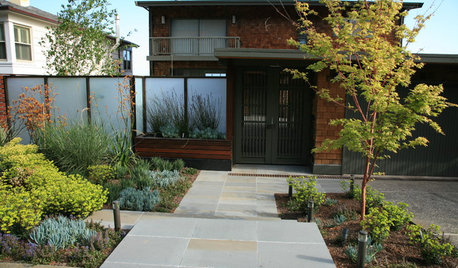
UNIVERSAL DESIGNAging-in-Place Resolutions for the New Year
How to make your home help you age gracefully right where you are
Full Story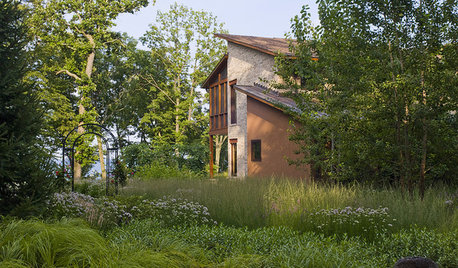
GARDENING GUIDES8 Unthirsty Plants Help You Save Water in Style
Spend less effort and money on your landscape with drought-tolerant and native plants that liven up your yard
Full Story
DECLUTTERINGDownsizing Help: How to Edit Your Belongings
Learn what to take and what to toss if you're moving to a smaller home
Full Story




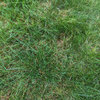

beckyinrichmond